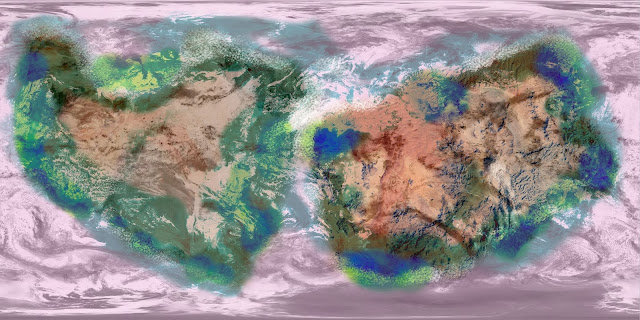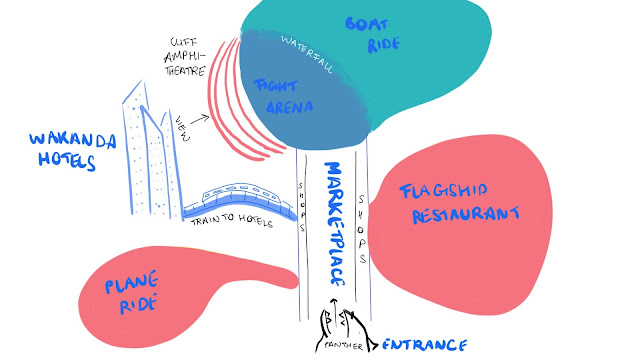Edna
This is Edna
Located 24 light years from our sun, and 94 million miles from its own, Edna is in the Goldilocks zone, and has large water oceans. The waters appear pink as the sea reflects the sky, which is a dusty salmon color due to a high amount of suspended dust particles in the upper atmosphere. Edna has two major land masses, surrounded by oceans on all sides. These large land masses are only slightly above sea level, resulting in very large shores that are warm, humid, and highly populated with plant life. Close to the shores, large, dense forests of saltwater mangroves form a consistent shoreline against the inner areas of land. The mangroves break down the seawater to release chlorine and hydrogen gases, which results in frequent localized acidic rain storms, triggered by a high concentration of hydrochloric acid that precipitates locally.
A heavy salt content in the oceans and resulting increased buoyancy allows for a massive underwater creature that dominates the ocean. Similar to Earth whales, but bearing a distinct resemblance to Earth squids, these animals eat the deepest of the mangrove roots, which they weave through and pick off with their tentacles. They filter the salt and breathe underwater, returning the excess salt at the base of the mangroves, which acts as fertilizer.
The central landmass areas are quite dry and desert-like, which give off the dust that gives the atmosphere its color. These areas get very little rain as the massive mangrove borders create a rain shadow area inland. Dusty underbrush grows here, feeding off deep underground water channels and potassium nutrients brought over by salt bees that feed off mangrove leaves. The leaves are high in potassium which is brought inland when the bees migrate to the open, dry spaces for mating season. They live for a single season, and the older generation dies after the season. Left in the desert, their potassium rich bodies decay and allow the nutrient to percolate through the soil.
Flat texture map of the planet
Panoramic view of the planet surface



Comments
Post a Comment